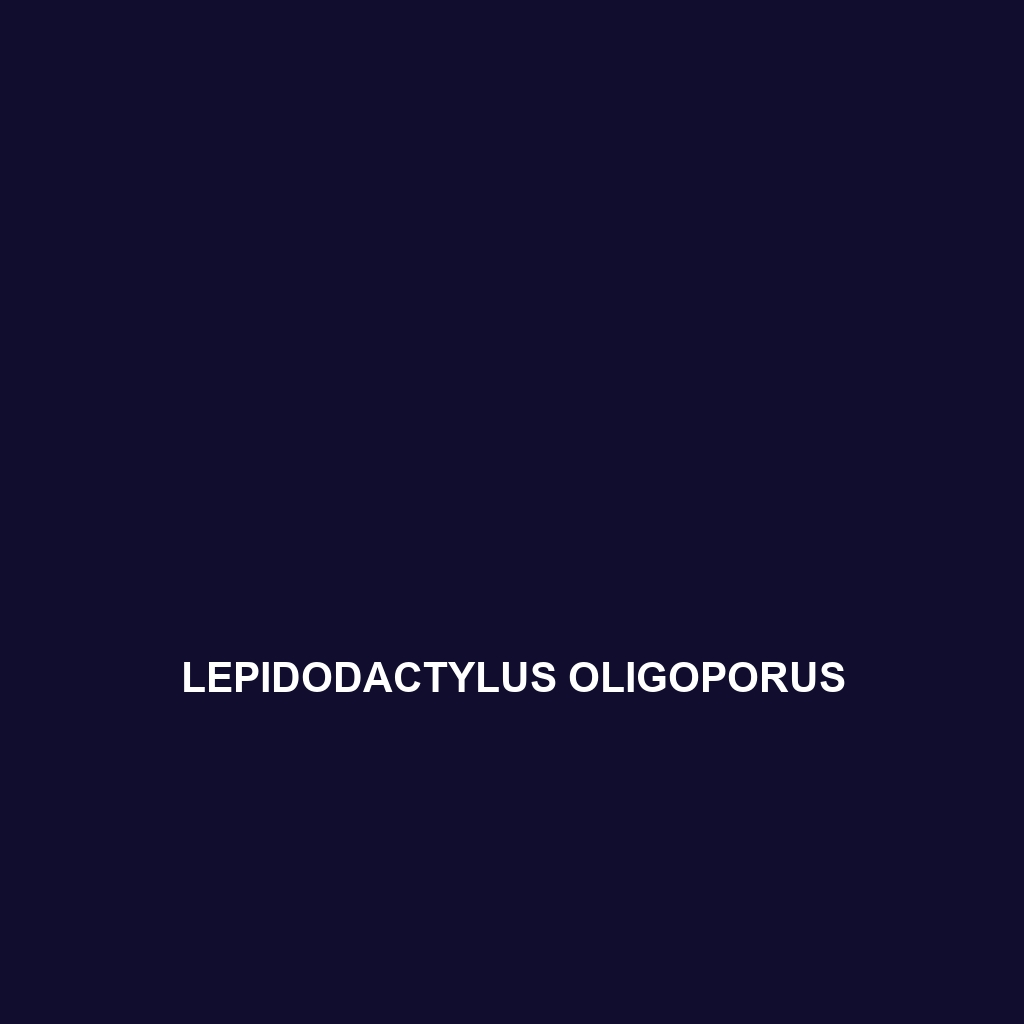Common Name
Lepidodactylus oligoporus
Scientific Name
Lepidodactylus oligoporus
Habitat
Lepidodactylus oligoporus is primarily found in the lush environments of tropical and subtropical rainforests, predominantly in regions of Southeast Asia, including Papua New Guinea and surrounding islands. This species thrives in humid, warm climates characterized by dense foliage and abundant moisture. It may also inhabit coastal areas, where it can be found in mangroves and other marine habitats. These habitats provide ample cover and food sources, essential for its survival and reproduction. Additionally, Lepidodactylus oligoporus is often associated with temperate forests that feature a diverse range of microhabitats, which contribute to the species’ adaptability and resilience in the wild.
Physical Characteristics
Lepidodactylus oligoporus exhibits distinct physical traits that make it unique among geckos. Adults typically measure about 7 to 10 centimeters in length, featuring a slender body and a long, tapering tail. Their skin showcases a mix of subtle colors, predominantly brown with variations of beige and grey, allowing them to blend seamlessly into their forest surroundings. One of the species’ most notable features is the presence of large, expressive eyes that enhance its nocturnal vision. The limbs are equipped with adhesive pads that facilitate climbing, a crucial adaptation for navigating the vertical aspects of their forest habitats.
Behavior
This species is predominantly nocturnal, demonstrating heightened activity during the night. Lepidodactylus oligoporus employs a variety of social interactions, including vocalizations and physical displays during mating rituals. They are known for their territorial behavior, particularly males, who vocalize to establish dominance and ward off rivals. During the day, these geckos can often be found resting on tree trunks or under leaf litter, utilizing their camouflage to evade predators. Their ability to drop their tail when threatened is an interesting survival tactic, allowing them to escape while their tail continues to wiggle, distracting potential threats.
Diet
Lepidodactylus oligoporus is primarily insectivorous, feeding on a diverse diet of small invertebrates, including crickets, moths, and various insects that are abundant in their habitat. This species plays an important role in the ecosystem as a natural pest controller, helping to maintain the balance of insect populations. Occasionally, they may consume small fruits and plant matter, making them partially omnivorous. Their foraging behavior typically involves active hunting during the night, using their keen sense of sight to locate prey.
Reproduction
The reproductive cycle of Lepidodactylus oligoporus is fascinating, as these geckos exhibit a form of parthenogenesis, where females can reproduce without mating. Mating usually occurs during the rainy season, with a gestation period lasting approximately 30 days. Females lay two eggs at a time, often burying them in leaf litter to protect them from predators. Parental care is minimal, as the hatchlings are independent from the moment they emerge, typically measuring around two centimeters in length and quickly adapting to their surroundings.
Conservation Status
Currently, Lepidodactylus oligoporus is classified as Least Concern by the International Union for Conservation of Nature (IUCN). Despite not facing immediate threats, habitat loss due to deforestation and climate change poses potential risks to their populations. Various conservation efforts are being implemented in the regions where they are found, including habitat protection and restoration initiatives aimed at ensuring the sustainability of their environment.
Interesting Facts
One of the most intriguing adaptations of Lepidodactylus oligoporus is its ability to change color slightly, providing enhanced camouflage against predators. This species also exhibits a unique form of communication, using a series of clicks and chirps to convey messages to others. Their remarkable ability to climb makes them proficient at escaping danger, often taking to the trees where few predators can follow.
Role in Ecosystem
Lepidodactylus oligoporus plays a crucial role in its ecosystem as both a predator and prey. As an insectivore, it helps regulate insect populations, which, in turn, supports the overall health of the forest ecosystem. Additionally, these geckos serve as a food source for larger predators, including birds and snakes, thereby enhancing the biodiversity of their habitat. Their activity contributes to a healthy nutrient cycle as they assist in the breakdown of organic materials in the leaf litter.
This description of Lepidodactylus oligoporus is SEO-optimized with relevant keywords, providing a comprehensive overview of the species, its habitat, characteristics, and ecological importance.
